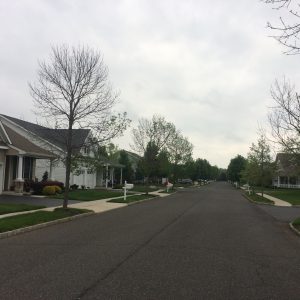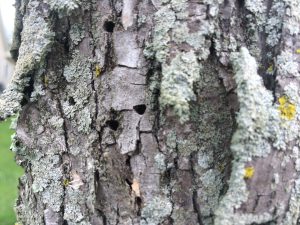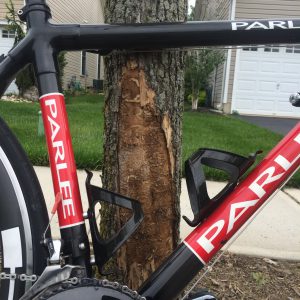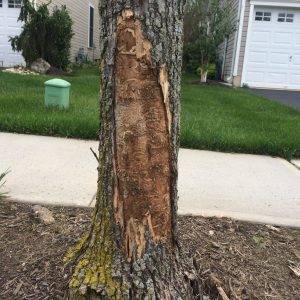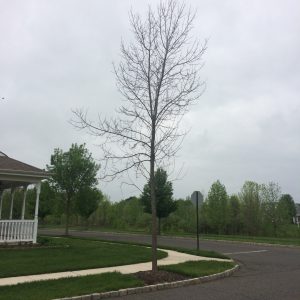In February, I was scheduled to speak at a landscape program in Rockville, MD. Before I went on, I had a chance to chat with one of the other speakers–the esteemed entomologist from the University of Maryland, Dr. Mike Raupp–who said concerning the Emerald Ash Borer, “nobody believes you until the trees start dying.”
Guess what? It is time to believe! This morning while cycling, I randomly rolled into a local neighborhood to check on a turf area the Plant Diagnostic Laboratory had worked on last summer when I noticed the ash trees were looking kind of thin. Not much will get me to stop riding–except maybe a good plant problem–but a closer look at these trees revealed “D”-shaped exit holes typical of Buprestid activity.
I quickly pulled the bark off the trunk, and before my very eyes, there were the classic serpentine galleries typical of emerald ash borer (EAB). First time I actually saw real EAB damage in the field. The sun was shining on a cloudy day!
Clearly, I need to curb my enthusiasm, because the impact of EAB will be huge in NJ. The forest service estimates there are about 25 million ash trees in NJ, which are mostly in the northern, forested portions of the state. That said, there are many neighborhoods and towns in New Jersey with ash-lined streets. My colleague, Steve Rettke, told me his neighborhood near Freehold has around 70 ash. The development I was in this morning had nearly 40. A TV reporter called the lab last week to ask about EAB and Montclair’s 5,000 ash trees. A number of us have been talking about the imminent arrival of the emerald ash borer in NJ for the last couple of years during our winter outreach. The critters are here and from what I saw this morning, it is time to believe!
Click on one of the following links for more information on this ongoing epidemic:
http://www.nj.gov/agriculture/divisions/pi/prog/emeraldashborer.html
http://www.state.nj.us/dep/parksandforests/forest/community/Emerald_Ash_Borer.htm
http://www.emeraldashborer.info
http://www.emeraldashborer.info/documents/Multistate_EAB_Insecticide_Fact_Sheet.pdf
